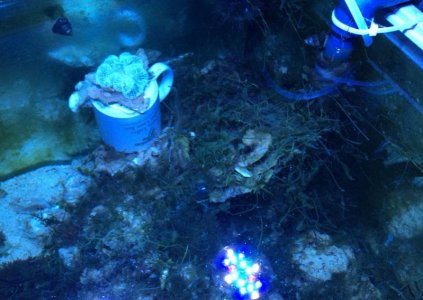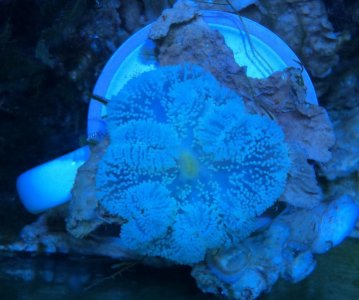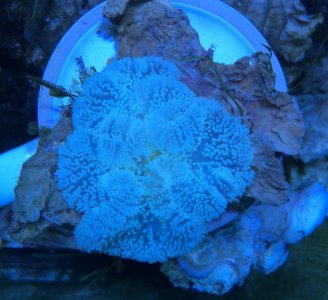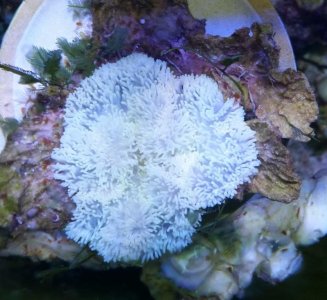OrionN
Moved on
This is a copy of a posted of another of my thread. Maybe someone will find it useful.
I performed a Zooxanthellae transplant for my Bleached Gigantea today. I did photo documentation of the procedure as below:
1. Obtained a tentacle from my healthy donor. Since my anemone is so small, I will just use a small piece of fish, and just use 1 tentacle

2. Stuff the tentacle into a piece of food, salmon in this case:

3. Here is a picture of my anemone before I feed him the zooxznthallae laced food:

4. Feed the zooxanthellae laced food to the anemone:

5. Just follow up to make sure the anemone ate the food:

6. Post feeding picture:

I expect the anemone will start regain zooxanthellae in about 2 weeks. A little longer in this case because I did not feed him as many zooxanthellae as I wanted too.
I performed a Zooxanthellae transplant for my Bleached Gigantea today. I did photo documentation of the procedure as below:
1. Obtained a tentacle from my healthy donor. Since my anemone is so small, I will just use a small piece of fish, and just use 1 tentacle
2. Stuff the tentacle into a piece of food, salmon in this case:
3. Here is a picture of my anemone before I feed him the zooxznthallae laced food:
4. Feed the zooxanthellae laced food to the anemone:
5. Just follow up to make sure the anemone ate the food:
6. Post feeding picture:
I expect the anemone will start regain zooxanthellae in about 2 weeks. A little longer in this case because I did not feed him as many zooxanthellae as I wanted too.




